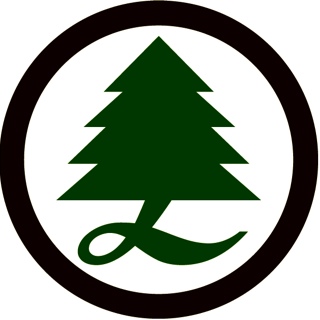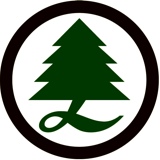Information
-
Audit Title
-
Conducted on
-
Prepared by
-
Location
Survey
Site Level Information
-
Site Type From GIS and Ancient Woodland Layer
-
The best opportunities to enhance biodiversity should be used to fulfil the 15% requirement in UKWAS.
-
Biodiversity Opportunity
-
Other Site Information (free text)
-
Area
-
Larger sites may need to be be stratified into relatively homogeneous areas. Add additional strata as required. Sketch strata boundaries onto a map for later reference.
-
STRATA
STRATUM
Strata Level information
-
The site connections to other areas of biodiversity and how the site sits in the wider habitat is important
Fully Surrounded - the area is fully surrounded by other areas key to biodiversity.
Multiple Connections - the area forms a key link between several other areas key to biodiversity.
Connected Through - the site forms a link between two otherwise disconnected areas of biodiversity.
Single Connection - the site is adjacent to another area of biodiversity but does not form a link.
Locally Disconnected - there are other sites important to biodiversity locally but the site is not directly connected to them.
Isolated - there are no other biodiversity sites locally. -
Site Connectivity
- Fully Surrounded
- Multiple Connections
- Through Connection
- Single Connection
- Locally Disconnected
- Isolated
-
Consider the Site and Crop Stability
-
Site Stability
-
Crop Stage
-
Windblow
-
Brief Stratum description
1. Veteran Trees
-
Veteran Trees. In PAWS these are those trees that probably significantly pre-date the crop.
Abundant >25 trees per ha
Frequent >5 trees per ha
Infrequent <5 trees per ha
Rare <1 tree per ha
Absent no trees present on site -
Veteran Trees
-
Threat Status
-
Nature of Threat (tick all that apply)
- Shading by Planted Crop
- Non-native Invasive Species
- Bracken, Strong Grasses etc
- Deer Browsing
- Regeneration of Conifer Trees
- Other (specify in comments below)
- Windblow in Overstory Crop
-
Comments
-
Photograph
2. Non Veteran Native Trees
-
In PAWS these would be Native trees that probably grew up with the current crop or since it was planted.
Abundant >25 trees per ha
Frequent >5 trees per ha
Infrequent <5 trees per ha
Rare <1 tree per ha
Absent no trees present on site -
Non Veteran Native Trees<br><br>
-
Threat Status
-
Nature of Threat (tick all that apply)
- Shading by Planted Crop
- Non-native Invasive Species
- Bracken, Strong Grasses etc
- Deer Browsing
- Regeneration of Conifer Trees
- Other (specify in comments below)
- Windblow in Overstory Crop
-
Comments
-
Photograph
3. Existing Regeneration of Native Trees
-
Abundant - regeneration spread widely throughout area
Frequent - patches of regeneration throughout area
Infrequent - occasional scattered patches of regeneration or individual small trees
Rare - occasional regenerating tree
Absent - no regeneration -
Existing Regeneration of Native Trees<br>
-
Threat Status
-
Nature of Threat (tick all that apply)
- Shading by Planted Crop
- Non-native Invasive Species
- Bracken, Strong Grasses etc
- Deer Browsing
- Regeneration of Conifer Trees
- Other (specify in comments below)
- Windblow in Overstory Crop
-
Comments
-
Photograph
-
If regeneration is absent add reason
Reason
-
Reason for lack of regeneration if absent.
- Shading by Planted Crop
- Non-native Invasive Species
- Bracken, Strong Grasses etc
- Deer Browsing
- Regeneration of Conifer Trees
- Other (specify in comments below)
- Windblow in Overstory Crop
-
Comments
-
Photograph
4. Deadwood
-
Significant standing and fallen deadwood would be larger than 20cm in diameter
Abundant >25 dead trees or significant limbs
Frequent >5 dead trees or significant limbs per ha
Infrequent <5 dead trees or significant limbs per ha
Rare - very occasional limb or dead tree
Absent - no deadwood present -
Deadwood<br>
-
Threat Status
-
Nature of Threat (tick all that apply)
- Shading by Planted Crop
- Non-native Invasive Species
- Bracken, Strong Grasses etc
- Deer Browsing
- Regeneration of Conifer Trees
- Other (specify in comments below)
- Windblow in Overstory Crop
-
Comments
-
Photograph
5. Vegetation on Rock Outcrops and in Gaps
-
Thinking in particular about native woodland indicator species
Abundant - native woodland indicator species are found throughout the area on crags and in gaps in the canopy.
Frequent - less common but still well spread throughout the area.
Infrequent - there are few crags or gaps in the canopy but those that exist do hold native woodland indicator species.
Rare - there are very occasional examples of native woodland indicator species.
Absent - there is no evidence of native woodland indicator species anywhere within the area. -
Vegetation on Rock Outcrops and in Gaps
-
Threat Status
-
Nature of Threat (tick all that apply)
- Shading by Planted Crop
- Non-native Invasive Species
- Bracken, Strong Grasses etc
- Deer Browsing
- Regeneration of Conifer Trees
- Other (specify in comments below)
- Windblow in Overstory Crop
-
Comments
-
Photograph
6. Vegetation in Riparian Zones
-
Thinking in particular about native woodland indicator species
Abundant - native woodland indicator species are found throughout the riparian zones
Frequent - less common but still well spread throughout the riparian zones
Infrequent - there are few riparian zones but those that exist do hold native woodland indicator species.
Rare - there are very occasional examples of native woodland indicator species in riparian zones.
Absent - there is no evidence of native woodland indicator species anywhere within the riparian zones. -
Vegetation in Riparian Zones
-
Threat Status
-
Nature of Threat (tick all that apply)
- Shading by Planted Crop
- Non-native Invasive Species
- Bracken, Strong Grasses etc
- Deer Browsing
- Regeneration of Conifer Trees
- Other (specify in comments below)
- Windblow in Overstory Crop
-
Comments
-
Photograph
7. Vegetation Under the Canopy
-
Thinking in particular about native woodland indicator species
Abundant - native woodland indicator species are found throughout the area under the canopy
Frequent - less common but still well spread throughout the area.
Infrequent - there are a few patches under the canopy that hold examples of native woodland indicator species.
Rare - there are very occasional examples of native woodland indicator species under the canopy
Absent - there is no evidence of native woodland indicator species anywhere within the area. -
Vegetation Under the Canopy
-
Threat Status
-
Nature of Threat (tick all that apply)
- Shading by Planted Crop
- Non-native Invasive Species
- Bracken, Strong Grasses etc
- Deer Browsing
- Regeneration of Conifer Trees
- Other (specify in comments below)
- Windblow in Overstory Crop
-
Comments
-
Photograph
8. Rare Species
-
Include both Flora and Fauna. Also consider nesting and breeding sites for rare species.
Key site - known breeding or refuge site for particularly rare or endangered species. Eg white tailed eagle, capercaillie. Include all designated sites here.
Important Site - site with 'second level' protected species. Eg red squirrel, otter, badger
Local interest Site - site with local interest or rarity
Expansion site - site with the potential to allow the expansion of local populations from adjacent areas or potential habitat link.
Absent - no rare species present or in the locality -
Rare Species
-
Threat Status
-
Nature of Threat (tick all that apply)
- Shading by Planted Crop
- Non-native Invasive Species
- Bracken, Strong Grasses etc
- Deer Browsing
- Regeneration of Conifer Trees
- Other (specify in comments below)
- Windblow in Overstory Crop
-
Comments
-
Photograph
9. Archaeology and Cultural Significance
-
Archaeology and Cultural Significance
-
Threat Status
-
Nature of Threat (tick all that apply)
- Shading by Planted Crop
- Non-native Invasive Species
- Bracken, Strong Grasses etc
- Deer Browsing
- Regeneration of Conifer Trees
- Other (specify in comments below)
- Windblow in Overstory Crop
-
Comments
-
Photograph
10. Amenity, Landscape and Public Access
-
Consider the area in terms of its overall Amenity, Landscape and Public Access Importance.
-
Amenity, Landscape and Public Access Significance
-
Threat Status
-
Nature of Threat (tick all that apply)
- Shading by Planted Crop
- Non-native Invasive Species
- Bracken, Strong Grasses etc
- Deer Browsing
- Regeneration of Conifer Trees
- Other (specify in comments below)
- Windblow in Overstory Crop
-
Comments
-
Photograph
Conclusions
-
Summary Comments and Information
-
Suggested Management (tick all that apply)
- Natural Reserve
- Long Term Retention
- Low Impact Silviculture
- Thinning
- Haloing of Veterans and Larger Native Trees
- Widen Riparian Zones
- Control Invasive Non-natives
- Control Regeneration of Current Crop Trees
- Improve Deer Control
- Deer Fence
- Clearfell at Onset of Windthrow
- Restock with Native Bl or SP
- Restock with Conifer
- Restock with Mixed Con/Bl Species









